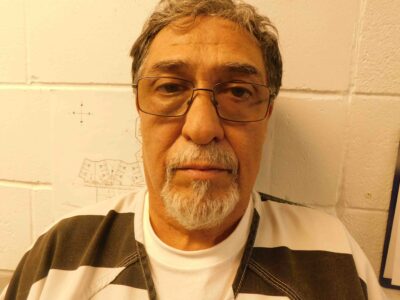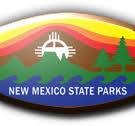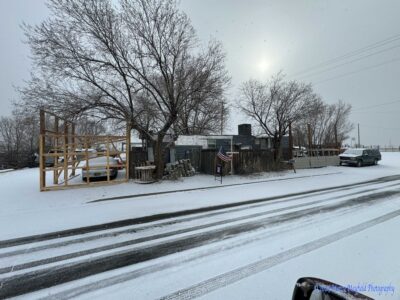by Nancy Christofferson HUERFANO/LAS ANIMAS — Whether one considers John C. Osgood a robber baron or a philanthropist, he nevertheless made a huge impact upon decades of life in Huerfano and Las Animas counties. Though he was the man everyone loved to hate, without his drive and foresight the history of Las Animas and Huerfano counties may have been very different.
HUERFANO/LAS ANIMAS — Whether one considers John C. Osgood a robber baron or a philanthropist, he nevertheless made a huge impact upon decades of life in Huerfano and Las Animas counties. Though he was the man everyone loved to hate, without his drive and foresight the history of Las Animas and Huerfano counties may have been very different.
Osgood was considered the founder of the Colorado Fuel and Iron Company back in 1887.
John Cleveland Osgood was considered by his cohorts and admirers some type of Horatio Alger figure, a simple boy who overcame his limitations by becoming one of the most successful industrialists of his era.
Osgood was born in 1851 in Brooklyn, but moved with his father to Iowa. Orphaned at the age of eight, he was taken under the care of relatives and attended school in Rhode Island. At the tender age of 14 he went to work in the office of a cotton mill, and never looked back. After fulfilling several other positions, he returned to Iowa and entered the banking business. When 26, he acquired an interest in the Whitebreast Fuel Company in Iowa and led a reorganization of the company. It became the main supplier of coal for a local railroad.
Through railroad sources, Osgood heard of the opportunities in coal mining in the new state of Colorado. In 1882, he visited the state and all of its coal mines. This led him to begin purchasing promising tracts of coal land and then entered into an agreement with a railway line. His original mining interests were in Boulder and Weld counties.
Osgood cemented firm relationships with three of his Iowa associates, Julian A. Kebler, Alfred C. Cass, and David C. Beaman. They were known as the Iowa Group, or more familiarly, the Big Four, when they relocated to Colorado. Allying themselves with several high powered attorneys, they organized the Denver Fuel Company in the fall of 1886. The company operated the Sopris mine west of Trinidad, among others. In the spring of 1888, Osgood was named general manager of the Colorado Fuel Company that had incorporated in 1884. One of its originators had been Samuel F. Rouse.
Initially, the Colorado Fuel Company bought coal from the mines and sold it to the railroads, rather than mining it. In 1888 the company was reorganized in a step toward consolidation of Denver Fuel, Colorado Coal and Iron, and several subsidiaries including coal, railroad, real estate and toll road interests.
After attaining the holdings of the Southern Colorado Coal Company and Huerfano Land Association, along with properties in several other counties, the Colorado Fuel and Iron Company incorporated in October 1892. Its coal mines included Sopris in Las Animas County, Walsen, Rouse and Pictou in Huerfano.
Osgood was president of the corporation as well as chairman of the board of directors.
CF&I was not just involved with coal mining. Its real estate transactions garnered lands suitable for coal and coke production, yes, but also its Southern Land Company, incorporated in 1887, bought land, operated retail stores and leased its property to others to develop. Most of its capital was spent in the areas around Lester, Rouse, Pictou and Berwind.
As early as 1877, business leaders and industrialists began discussing the opportunities involved with establishing a Bessemer steel plant in Pueblo. The city fathers backed the plan, but it was not until 1880 was the Colorado Coal and Iron Company were able to begin construction. It was through the acquisition of this company that CF&I went into the steel business.
Under Osgood’s leadership, CF&I weathered its first strike for unionization in 1894 and by 1900 had increased its mines in the bi-county area to include more than a dozen coal and coke camps, each employing hundreds of men. The company also owned the Colorado and Wyoming Railroad that served the camps with freight and passenger trains.
The late 1890s through the ‘teens were the deadliest years for coal miners. Conditions in and around the mines were crude, and injuries often fatal. Men were crushed by coal, by rock, they fell down shafts, and got caught in machinery. They were electrocuted by live wires strung through the rooms, they were killed by mules. The company took little responsibility. In fact, when coroners’ juries met to determine the cause of death, they usually blamed it on the deceased himself and not the company. Widows and orphans received no compensation but rather were dependent upon the man’s coworkers’ generosity. It was not unusual for the camp to donate enough money for the woman and her children to return to her family, whether in this country or another. Osgood was not at all a “benevolent despot”.
During these years CF&I began recruiting employees throughout Europe, especially what was called “Austria” back then but which included several Slavic countries.
It was at the turn of the century that Osgood and company began what they considered “good works”. They set up the Sociological Department in the spring of 1901. Schools and clubhouses were their first priority. One of the first of the clubhouses was built in 1902 in Redstone, Osgood’s favorite mining camp, in Gunnison County, where he built his personal mansion. He built this to be a model town for the company, and Osgood no doubt delighted in trotting out his photos of the massive stone buildings that lined its streets as a means of showing his “philanthropic” side and concern for his employees and their well-being. He even donated 400 volumes of books to the clubhouse library.
By this time, however, Osgood’s remaining time with CF&I was growing short.
In 1899, he had been negotiating with the Victor Coal and Coke Company for some time with an eye to consolidating it into CF&I. Through various machinations, he acquired it. In 1900, he failed to purchase a coal company near Gallup so formed the American Fuel Company under the laws of New Mexico Territory. He and his business partners decided to keep Victor and bought several smaller companies to combine them into the Victor Fuel Company. Assets at the time included 14,000 acres, five mines and 200 coke ovens in Las Animas and Huerfano counties. Meanwhile, Osgood was in the midst of orchestrating CF&I’s huge expansion of the steel works in Pueblo at a cost of $15 million. The company also moved into Utah and Wyoming to operate iron mines and diverted into manganese mining.
These expansions caused problems between employees and the company and a brief union strike in 1901 occurred. Osgood was the enemy of every miner as the personification of the ultra capitalist.
In 1903, Osgood left CF&I and concentrated on the Victor and American properties, which he consolidated into Victor-American Fuel Company. He also retained the Redstone mine, coke ovens and, of course, his mansion. When the 1903 strike started, he resorted to violence against the strikers. In 1913, he abandoned it all, boarded up the mansion and moved to New York.
It would seem such a powerful and successful person would go on to lead a comfortable life, and perhaps he did, when he wasn’t plotting to make more money. However, he was married three times, had no children, and died of cancer.

Osgood the bad and the ugly
More from NewsMore posts in News »




